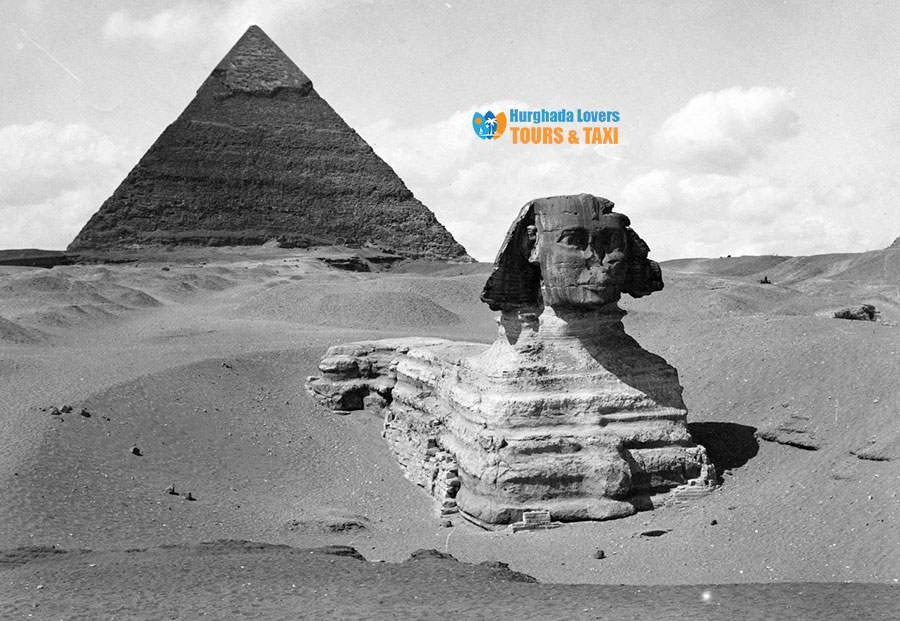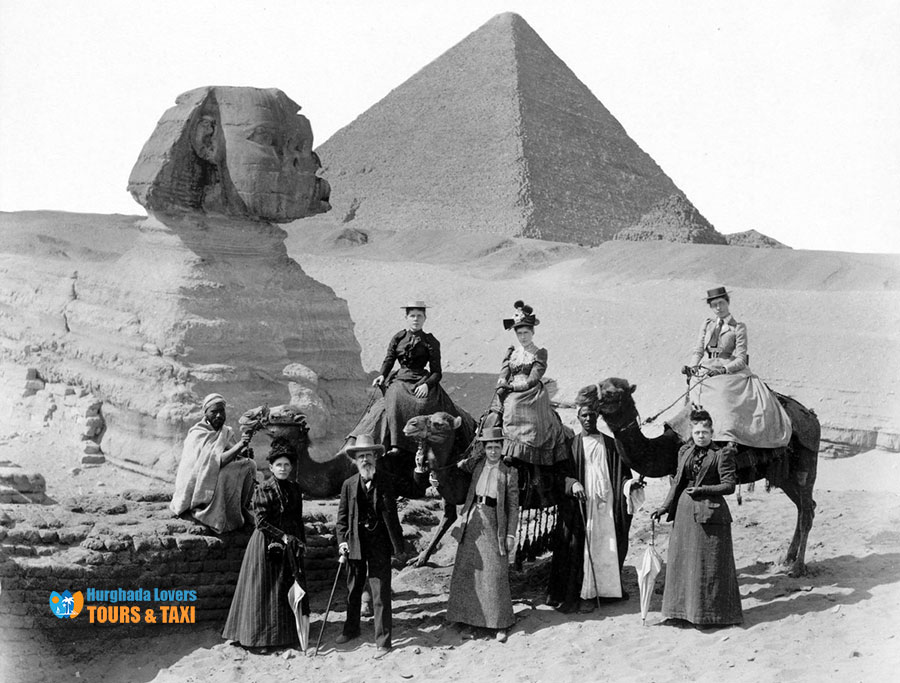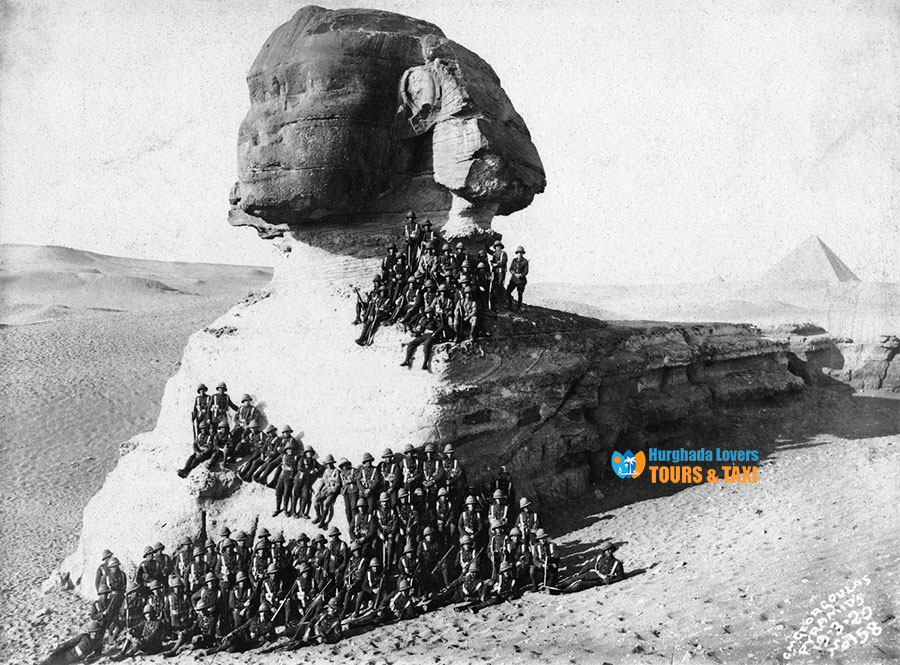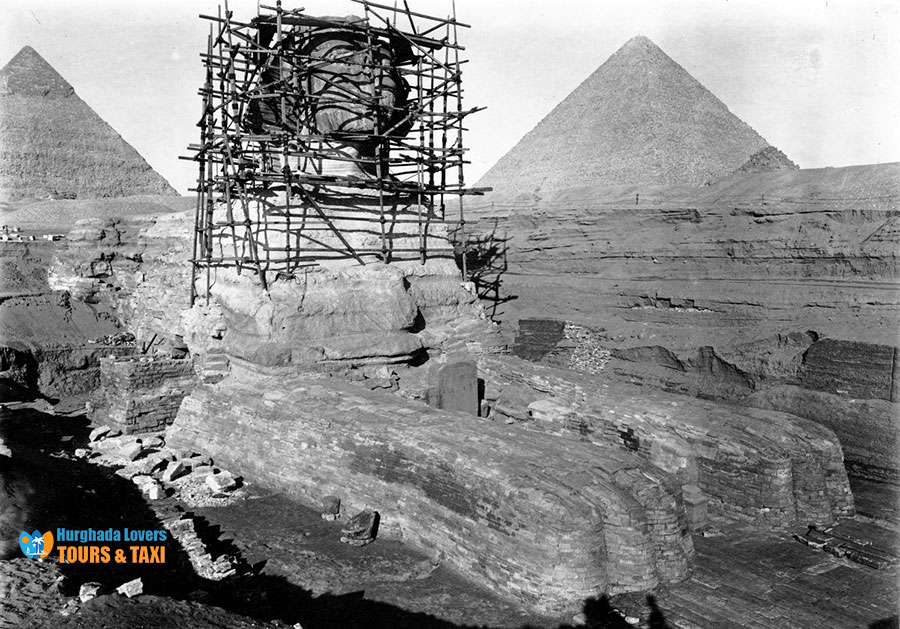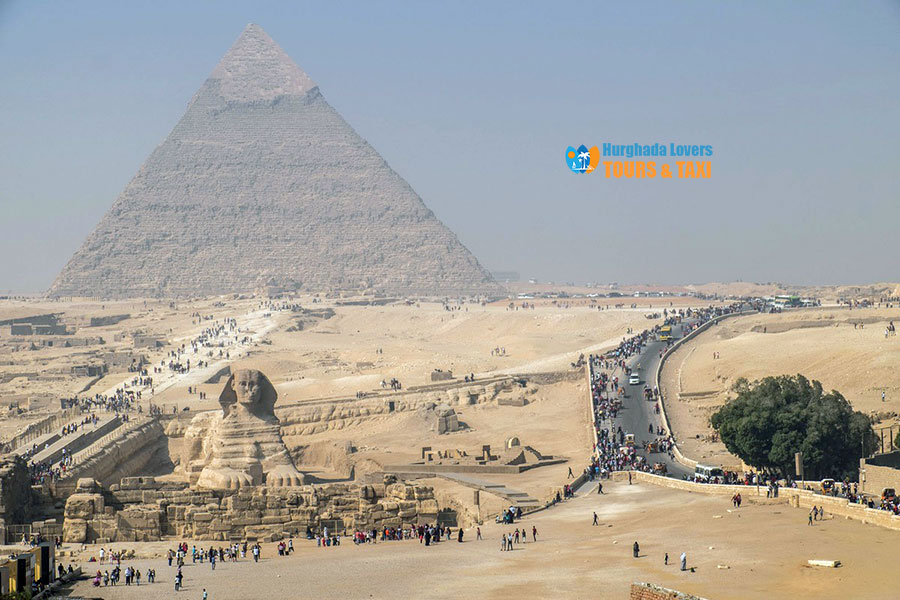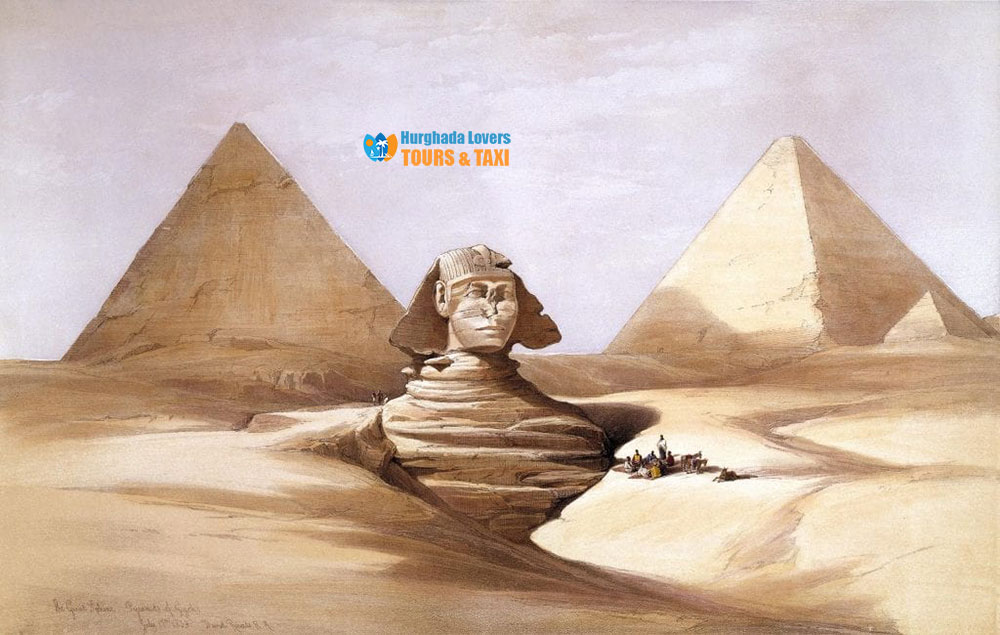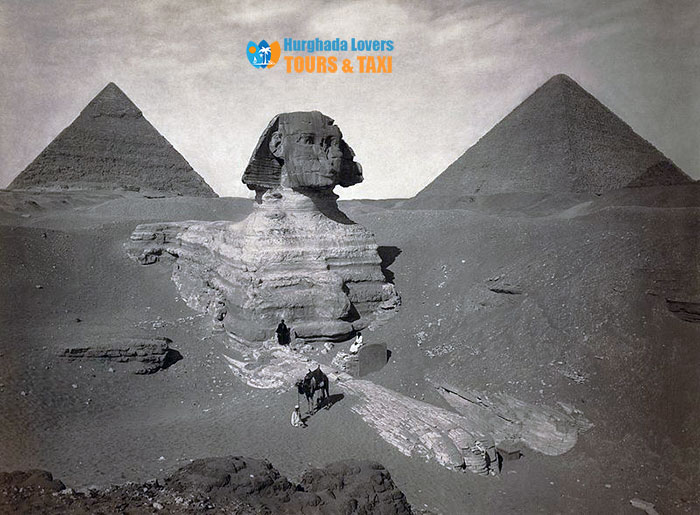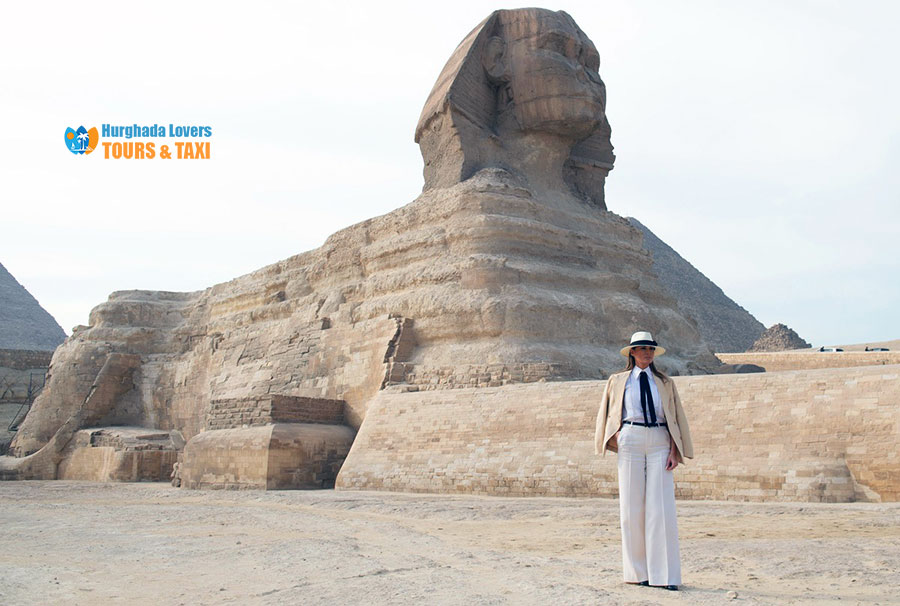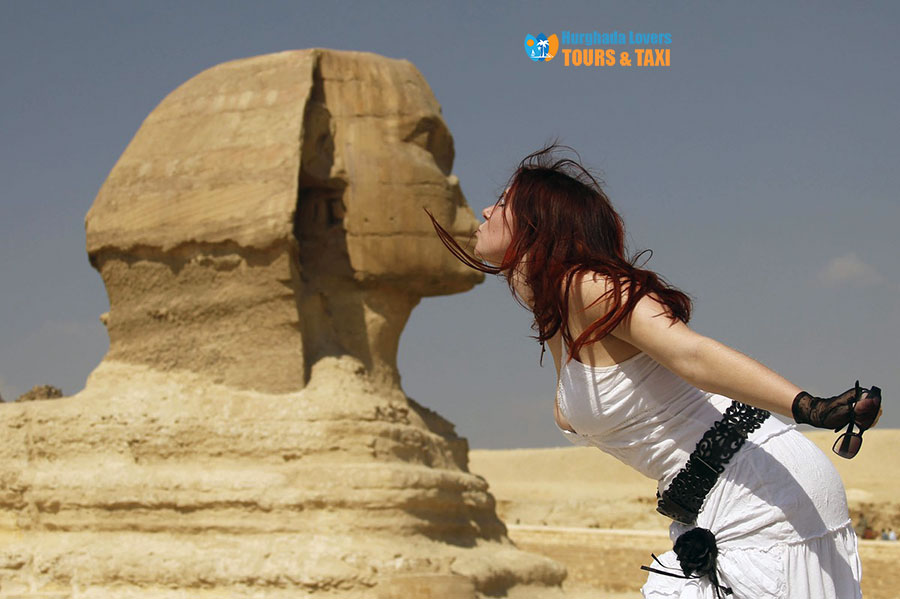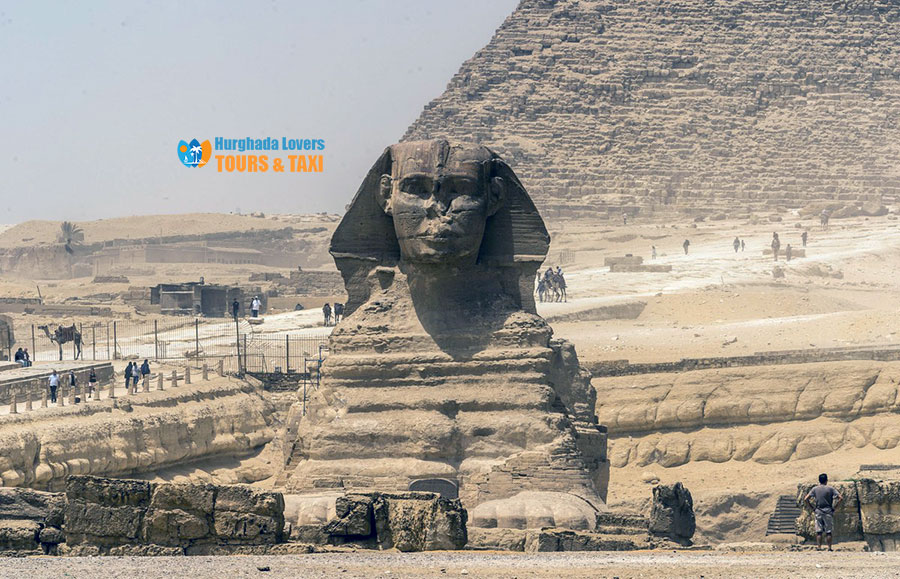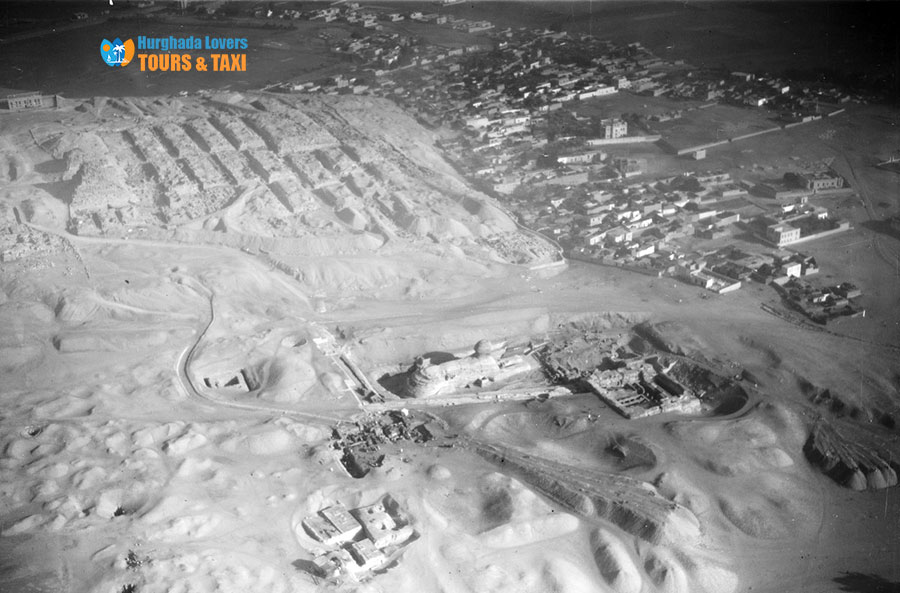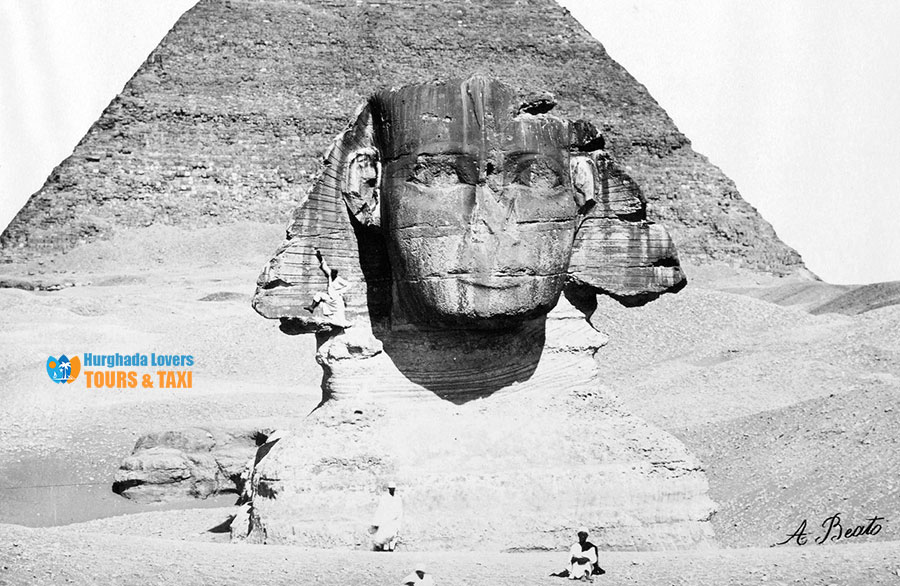Great Sphinx of Giza Egypt | History, Facts, Secrets Pharaonic Monuments
The Sphinx of Giza Cairo Tours Egypt | History Of Egyptian and secrets of the Ancient Egyptian civilization to build Cairo’s most important archaeological monuments and temples.
Information you never knew before about the construction of the statue, why did it have the name Sphinx, what is the secret of the opening under its ear, which side is looking at and more secrets about the Pharaonic civilization. Learn more about tour schedules, ticket prices and more to start your Cairo Sightseeing Tour & Things to Do in Egypt.
Hurghada lovers Offer Luxury Hurghada to Pyramids Tours | El Gouna to Pyramids Tours | Makadi bay to Pyramids Tours | Sahl Hasheesh to Pyramids Tours | Soma bay to Pyramids Tours .
Sculpture in ancient Egypt for the statue of the Sphinx:
The Sphinx is a synonym for the word “secret,” which in ancient Egyptian religion means a lion with a human body, perhaps a mystery or secret throughout its history, built in the time of King Chephren, the guardian of the gates of the underworld.
The statues of the Sphinx were made of stones and his mission was to guard his tombs, but in the New Kingdom, he was placed on the edges of the roads leading to the entrances of the temples. The Sphinx was carved in southern Giza as it appeared to be in the east and became a symbol of nostalgia and it was later revered.
At the time of Thutmosis IV, its prestige was restored and repaired after the sand covered it, and it was proven that it was repaired after the dream of this king, and the dream was fixed in an engraved stella and placed between the hands of the Sphinx called “the Dream Stella”, and became synonymous with the God (Harmakhis), which means “Horus on the horizon”, and it is likely that when the Arabs called it the Sphinx or Abu Al-Hole, it had to do with the word “pop” which was turned into a hole in their language.
The statue is made of limestone, where sections of stone used in the construction of pyramids were found and are probably originally covered with a layer of plaster and color.
Traces of the original colors are still visible on one of his ears. The Sphinx is about 73.5 meters long and 20 meters high and 14 meters wide with its head to the east. His body is a lion’s body, his face is the incarnation of Pharaoh Chephren, and the head of the statue covers the royal headdress called the Nemes whose task is to guard the site.
The body and head are carved in the same stone, the legs were added by construction, and there are the foundations of a temple mainly built in the same period of the following times, and it had a long false beard, which is now broken and is in the British Museum.
Great Sphinx of Giza Egypt | History, Facts, Secrets Pharaonic Monuments
Why does the Sphinx have this name?
The Great Sphinx of Giza is synonymous with a password, which in ancient Egyptian religion means a lion with a human body and may have been a mystery or secret throughout its history.
Who built the Sphinx?
Built at the time of King Chephren (Khaa-Ef-Ra).
Date of construction: Between 2558-2532 BC. J.-C.
He is the guardian of the gates of the underworld. The statues of The Great Sphinx of Giza were made of stones and its mission was to guard its tombs, but in the New Kingdom era it was placed on the edges of the roads leading to the entrances of the temples. Sculpture of the Sphinx in the south of Giza
In which direction does The Great Sphinx of Giza look?
He looks to the East and becomes a symbol of nostalgia, and he was later venerated. At the time of Thutmosis IV, its prestige was restored and repaired after the sand covered it, and it was proved that it was repaired after the dream of this king, and the dream was immortalized in an engraved stella placed between the claws of the Sphinx called “The Dream Stella”, and he became a representative of the God (Harmakhis), which means “Horus on the horizon”, and it is likely that when the Arabs called him the Sphinx or Abo El Hol, it had to do with the word “bob” which was transformed in their language into hol.
The statue is made of limestone, where sections of stone used in the construction of The Pyramids of Giza were found and are probably originally covered with a layer of plaster and color. Traces of the original colors are still visible next to one of his ears. The Sphinx is about 73.5 meters long and 20 meters high, while its width is 14 meters with its head to the east.
Is The Great Sphinx of Giza a woman?
His body is a lion’s body, his face is the incarnation of Pharaoh Chephren, and the head of the statue is covered by the royal headdress called the Names whose task is to guard the site. The body and head are carved in the same stone, the legs were added by construction, and there are the foundations of a temple mainly built at the same time of the following times, and it had a long false beard, which is now broken and is in the British Museum.
The length of the Great Sphinx of Giza:
Length: 73.5 m
Front foot length: 15 m
Width: 19.3pm
Height: 20 m
The secret of the hole under the ear of The Great Sphinx of Giza?
Traveler Heyward Fiz used numerous cans of dynamite to search and excavate the secret basements of the Sphinx statue which formed large openings at the head of the statue and then failed to restore the holes with cement.
This caused a hole under the head of the statue that exists so far.
The history of Great Sphinx of Giza Nose
The Pharaonic statue had a nose 100 cm long, but so far, the cause of the nose loss has not been discovered, but there is a lot of effort, including:
- The nose was destroyed by the militia of the French Expedition led by Napoleon Bonaparte.
- The statue was built from the beginning.
- “Sa’em Al-Dahr” a sheikh who lived next to the statue destroyed it.
- Climatic and erosion factors.
The truth about the The Sphinx of Giza?
Archaeologists and historians of Egyptology have searched for the truth of the statue, but so far no confirmed information has been found, but there are opinions about it…
- The statue represents the conception of human wisdom and the power of King Chephren’s lion.
- King Cheops built the face of the Sphinx with the same details of his facial features, where a pharaonic statue of King Cheops resembling the face of the Father of the hall was found.
- In ancient religious beliefs, the worship of the sun god Hor-Em-Akhet represents any Horus on the horizon, which was represented by the Egyptians the worship of the God Atum to worship the sun at sunset.
- Many kings of Pharaohs visited the statue, such as King Thutmosis II “Egyptian Pharaohs kings“, King Tutankhamun, King Ramses II and Emperor Septimus Severus.
The History of the Great Sphinx of Giza Egypt
- The Great Sphinx of Giza is located on the southeast route of the Great Pyramid in a relatively low valley, and some people are shocked to see the Pyramid of the Sphinx for the first time because they expect it to be too large, but in fact, it looks smaller in size compared to the pyramids.
- The Great Sphinx of Giza is carved out of a large rock and this rock is part of the funerary complex in the valley temple attached to King Chephren’s second pyramid of Giza.
- Did you know that until 1926, the statue of the Sphinx was buried in the sand up to the neck, and after the sand around it was lifted, archaeological research assures us that the history of the Sphinx dates back to the time of King Chephren, the owner of the second pyramid.
- The Sphinx is part of Chephren’s complete pyramid complex a large quarry from which workers cut the stones necessary for the construction of pyramids and private tombs but remain in the center of a large mass left in place and the presence of this block spoils the second pyramid and its ascending path.
- King Chephren’s architects carved from this block a luxurious statue of the king with the body of a lion and the human head.
- At the top of the sphinx statue, the royal headdress known as “Nemes” and descended on either side of his face, which represents the face of King Chephren himself.
Secrets of the construction of the Sphinx:
The tension hardly indicates that the Sphinx, in the New Kingdom, was considered a god for the dead and a guardian of the dead, a characteristic that makes its position the entrance to the Necropolis a very appropriate thing. This feature may be due to the fact that the Sphinx since the time of the Old Kingdom has been named Atum the Sun God, as seen in the durability of the pyramids.
Perhaps the idea was that King God lived there on the western horizon like Atum and later became considered the protector of the dead in the west. However, the Sphinx’s relationship with the custody of the dead was the subject of the fiercest insistence of the late Egyptians, who revered it by saying, “I protect your burial sanctuary,” and I will guard your burial chamber, pay the stranger who can enter, drop your enemies with their weapons, and expel the villain from your grave, and your family will be your enemies … They will never come back.
We also note that the humanization of the king’s features in the double and triad statues was most evident in some of the sculptures after the Men Kaw Ra era, as confirmed by the head of the statue, which is believed to belong to King Shepses Kaf, the highest sculpture peak of the Old Kingdom era, in its ability to highlight vital and human feelings in the statue’s features.
In addition, the transparency of the alabaster used as a sculptural material added to this head a sense of vivacity, compared to other heads of royal statues dating from the same period, which are characterized by art’s adherence to formality rather than its attachment to expressionism, although these heads were carved with powerful art engaged in extreme precision.
There is nothing more beautiful in the history of sculpture than the statue of Chephren in diorite stone, which is exhibited in the Cairo Museum, this statue was old at the time of Braxtel, introduced us to Braxtel, but it passed an era of fifty centuries, then reached us and was hardly influenced by the promises of the time and its deputies.
This statue was made of the most difficult stone, but it transmits to us the maximum of the physical strength of the king (or the artist), his authority, his stubbornness, the solidity of his opinion, his bravery, and his intelligence.
The ancient Egyptian sculptor followed some traditional rules derived from the religious beliefs of that time, and it was noted in all the conditions of the statues, whether they were standing, sitting on a chair, squatting, that the body and head faced the gaze and had no twisting.
This is a situation that shows respect for the function, for the soul and for the people, and it has been noted that in standing statues, the left foot moves forward with the body leaning on the right leg. The artist also placed some of the statues in the eyes made of different materials.
History of the Dream Stella:
Between the claws of the Sphinx is a granit stella engraved by King Thutmosis IV.
(Dream of a fishing trip), detailing the story of a dream that touches and the story of the agreement between him and the Sphinx on this granite stella, which still exists today.
Throughout the ages, the Sphinx has been covered with sand and has been cleaned several times.
The most famous clean-up operation was recorded on the “Stella of the Dream” located just in front of the Sphinx, where it was ordered to be placed by Pharaoh Thutmosis IV between 1400-1390 BC .C.
The Stelle of the Dream describes the promise that Prince Thutmosis IV received in the dream that he would become king if he removed the sand around the Sphinx, before ascending the throne of Egypt in 1401 BC.
- Height: 144 centimeters.
- Width: 40 centimeters.
- Thickness:70 centimeters.
In its upper part are two carved forms of Pharaoh Thutmosis IV on the right and left offering the offerings to the Sphinx.
Foreign archaeologists have taken models of the painting and prepared gypsum molds for the translation and interpretation of hieroglyphic writings and drawings, one of which is very similar to the original from the Museum of London.
The Ssecret of the construction of The Sphinx of Giza:
It is hardly necessary to point out that the Sphinx, in the time of the New Kingdom, was considered a god for the dead and a guardian of the dead, a feature that makes its position at the entrance to the cemetery a very appropriate thing.
This feature may be since the Sphinx since the time of the Old Kingdom was named Atum the Sun God as seen in the durability of the pyramids, and perhaps the idea was originally that King God resided thereon the western horizon as Atum and later became considered the protector of the dead in the West.
However, the Sphinx’s relationship with the guard of the dead was the subject of the fiercest insistence of the late Egyptians, who revered it in Saying: “”I will protect your funeral sanctuary,” and I will guard your burial chamber, I will prevent the stranger from entering, I will let down your enemies with their weapons, and I will expel the wicked from your grave, and that of your family. They will not return never.
We also note that the humanization of the king’s features in the statues of the duo and trio was most evident in some of the sculptures after the era of King Mikerinos (Men-Kao-Ra), as confirmed by the text engraved on the statue, which would belong to King Chepses-Ka-Ef, the highest sculpture peak of the Old Kingdom era, in its ability to project vital and human feelings into the characteristics of the statue.
In addition, the transparency of the alabaster used as a sculptural material has added to this head a sense of life, compared to other heads of royal statues dating from the same period, which are characterized by art’s adherence to formality rather than its attachment to expressionism, although these heads were carved with reinforced art that adheres to extreme precision.
The Sphinx of Giza from the inside:
There is nothing more beautiful in the history of sculpture than the statue of Chephren in diorite stone, which is exhibited in the Cairo Museum “Museums of Egypt“, this statue was old at the time of Braxtel, he introduced us, but it passed a period of 50 centuries, then reached us and was hardly influenced by the promises of time and its deputies. This statue was made of the most difficult stone, but it conveys to us the maximum of the physical strength of the king (or the artist), his authority, his stubbornness, the solidity of his opinion, his bravery, and his intelligence.
The ancient Egyptian sculptor followed some traditional rules derived from the religious beliefs of that time: it was noted in all the conditions of the statues, whether standing, sitting on a chair or squatting, that the body and head faced the head and had no twisting, a situation that showed respect for the function, for the soul and for the people, and in the standing statues, the man on the left advanced to the right with his body resting on his right leg. The artist also placed some of the borrowed statues from the eyes made of different materials.
Archaeological site: Pyramids of Giza
Address: Plateau of the Pyramids, Giza Governorate.
Visit dates The Sphinx of Giza:
Open Every Day From 08:00 AM To 19:00 PM
Ticket prices to enter the area of the ruins of the pyramidal sphinx:
Ticket price for foreigners
Ticket price per person: EGP 320
Student ticket price: EGP 160
Ticket price for Egyptians
Ticket price per Egyptian person: EGP 20
Student ticket price: EGP 5
The price of a ticket includes entry to the area of the ruins of the pyramid + the Great Pyramid:
Ticket price per person: EGP 500
Student ticket price: EGP 250
Price of a ticket to open the tombs of the Pharaonic workers:
Ticket price per person: EGP 400
Student ticket price: EGP 200
Car ticket prices:
Private:5 Egyptian pounds
Bus Coaster / mini bus: 10 Egyptian pounds
Bus: 20 Egyptian pounds
Author & Writer The Sphinx of Giza: Tamer Ahmed Abd elfatah Yousif | Tourism Expert | Best Tour Operator in Hurghada
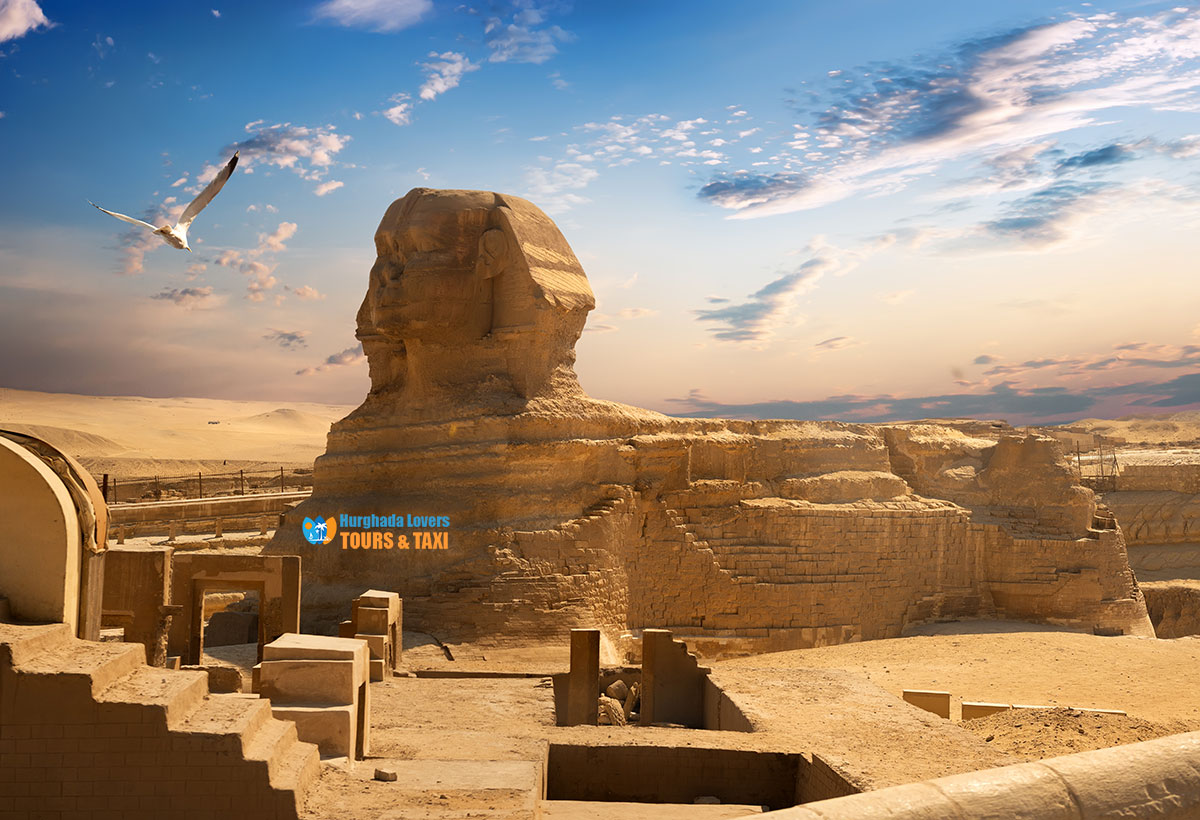
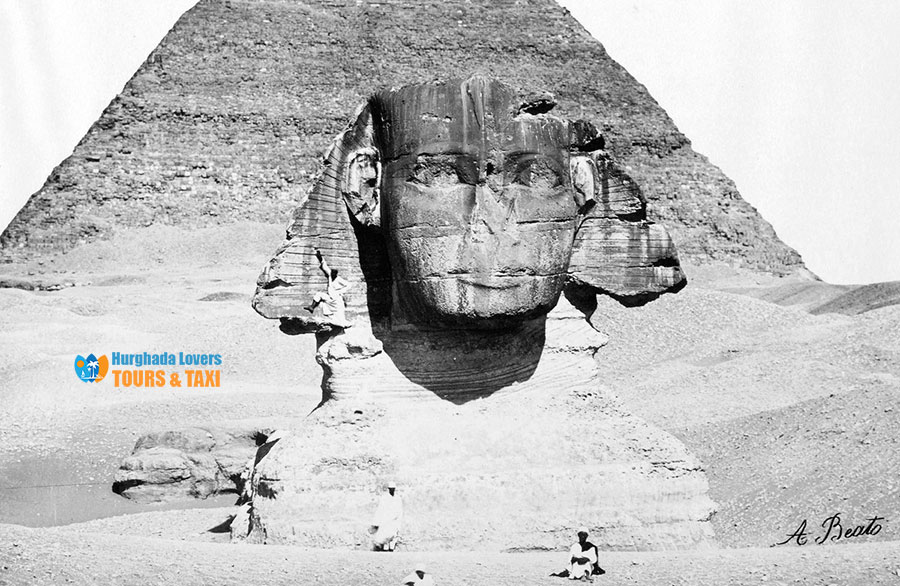
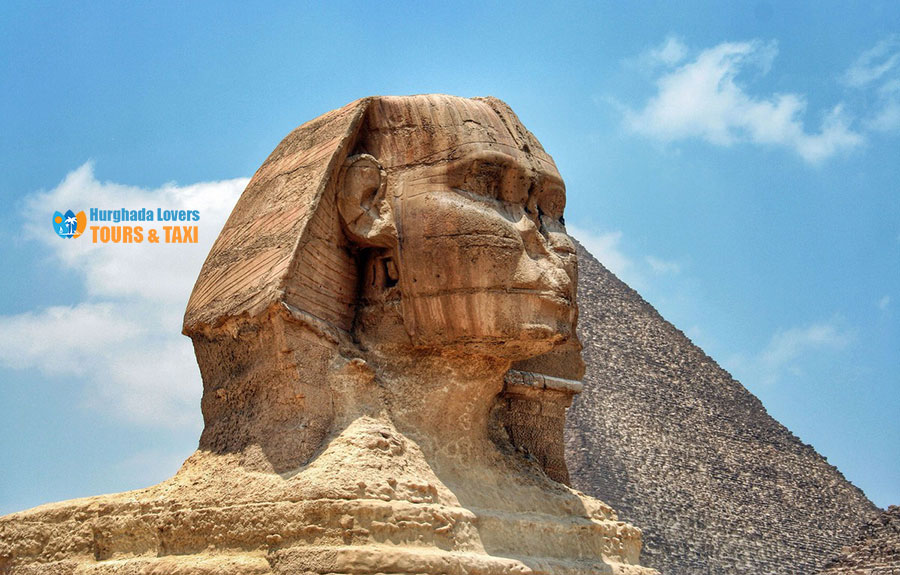
The Sphinx of Giza Cairo Egypt | the history and secrets of the ancient Egyptian civilization to build Cairo’s most important archaeological monuments and temples.


